Jun 10th 2025
THE SAFARI RIFLE
Have you ever been to Africa for Cape Buffalo, or hunted a large Brown Bear? Maybe you’re consid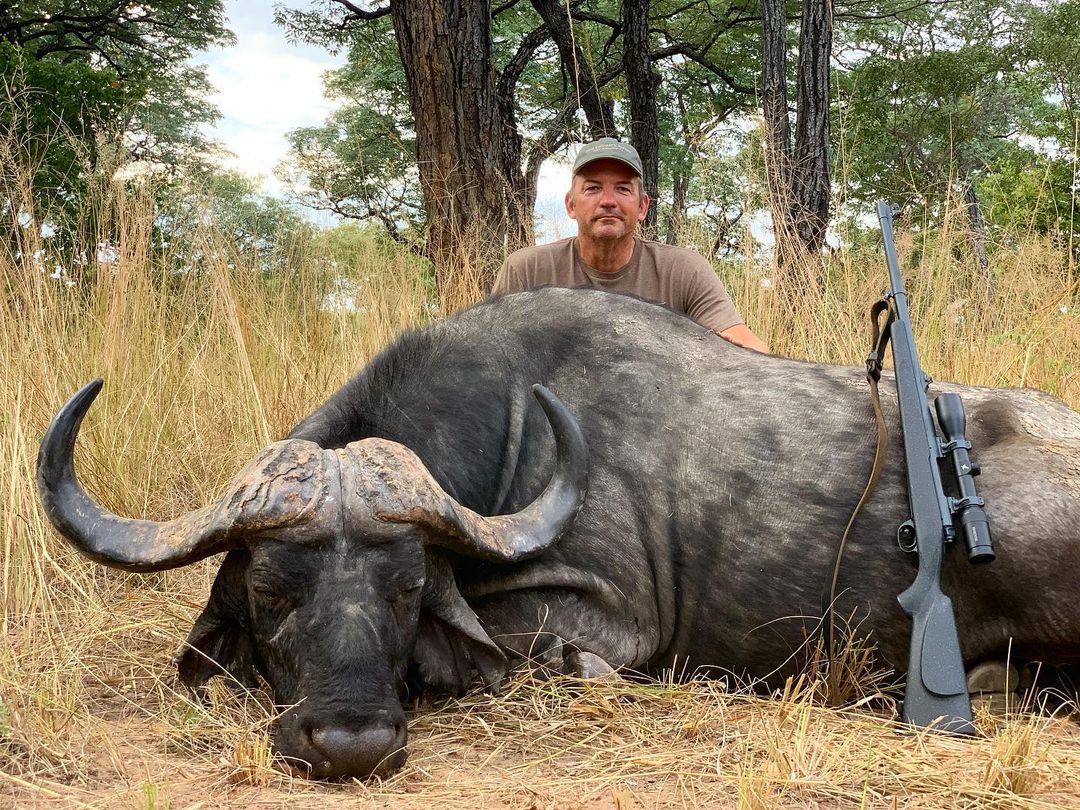 ering an Alaska Moose hunt, or Bongo in Cameroon.
ering an Alaska Moose hunt, or Bongo in Cameroon.
These hunts require a different kind of hunting rifle.
Alaska can be an extremely brutal hunting environment with extreme cold, driving rain, snow, ice, and rugged terrain that lends itself to slips and falls. Cape Buffalo can just be plain nasty. They are big, fast, tough, and ill-tempered. Brown Bears are wiley, incredibly quick, protective of cubs, territory and man do they have big teeth and claws!
A typical push feed action, with a small spring loaded ejector and small extractor is not the most reliable option for these hunts. While awesome for Deer, Sheep, Elk and other game, they are not full-proof enough for extreme conditions, especially when hunting dangerous game.
There is a greater chance of a feeding or ejection problem with push feed actions, especially with very fast, hard bolt cycling as is needed when facing a charging animal.
This is why we build our custom Safari rifle.
This rifle is built on the venerable Dakota 76, now Parkwest 76 action. The action has four key features that make it perfect for dangerous game, and extremely cold, wet conditions.
Feature #1: True Control Feed Action
This large extractor is very strong. It picks up and “controls” the cartridge as soon as it comes out of the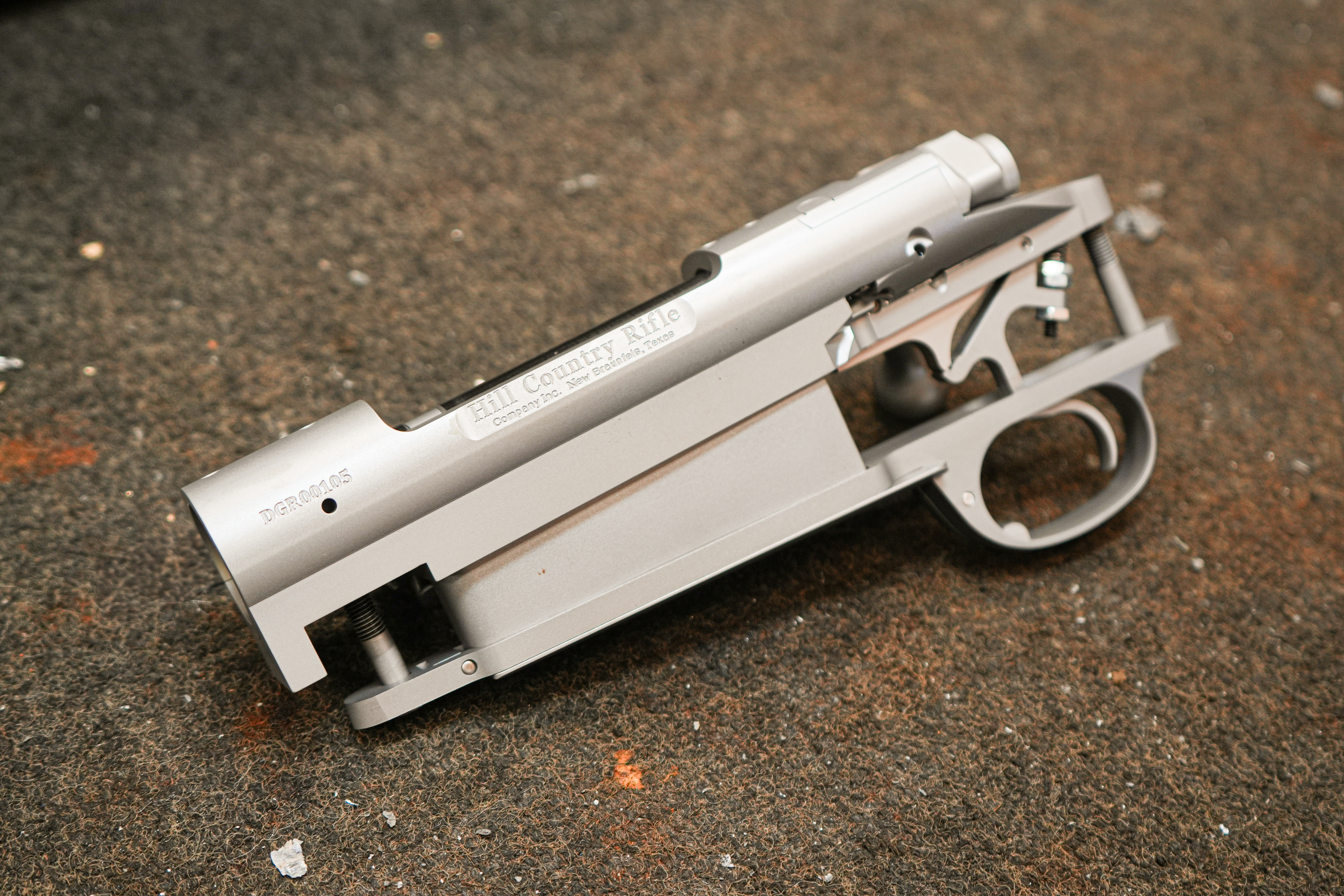 magazine box. Dirt, Ice, or a hot load are not likely to prevent extraction because the extractor surface is very large, grabbing more of the case rim, and it does not flex away from the case rim when the bolt is pulled back.
magazine box. Dirt, Ice, or a hot load are not likely to prevent extraction because the extractor surface is very large, grabbing more of the case rim, and it does not flex away from the case rim when the bolt is pulled back.
Another benefit is that it avoids a double feed in the case of a short stroked bolt. While this is rare, it does happen. A hunter will gently push a round from the magazine, and then, when a Buffalo or Lion appears, freak out a bit and pull the bolt backward to chamber another round. Game over with a push feed. Two rounds are up and the rifle is completely jammed.
With the Safari control round feed action, the first round would be ejected because the extractor already controls it. A push feed action does not control the cartridge until the bolt is in the cocked position.
Feature #2: The Safari action has a “physical ejector”
Unlike most push feed actions that have a spring loaded plunger in the bolt face acting as the ejector, the Safari action’s ejector is a large steel rod at the rear of the action. When the bolt is driven backwards, the case hits the steel rod and is flung out of the action. If you think about cartridges like 375 H&H, 416 Rem. Mag., these are very long cases. With a push feed action and a very fast extraction, it is possible for the empty case or loaded round to fall back into the action because the back of the case was already entering the back of the action before it could be fully ejected. This can’t happen with the Safari action because the ejector is located in the back of the action. No matter how fast you run your bolt, the case will be ejected. In fact, the faster you run the bolt, like you might want to do if a Buffalo was charging at you, the farther the case flies out of the action.
Safari action’s ejector is a large steel rod at the rear of the action. When the bolt is driven backwards, the case hits the steel rod and is flung out of the action. If you think about cartridges like 375 H&H, 416 Rem. Mag., these are very long cases. With a push feed action and a very fast extraction, it is possible for the empty case or loaded round to fall back into the action because the back of the case was already entering the back of the action before it could be fully ejected. This can’t happen with the Safari action because the ejector is located in the back of the action. No matter how fast you run your bolt, the case will be ejected. In fact, the faster you run the bolt, like you might want to do if a Buffalo was charging at you, the farther the case flies out of the action.
Feature #3: The Safari action has a Model 70 style 3-position safety
While this is not exclusive to a control feed action, it is a great feature. In the rear position the safety locks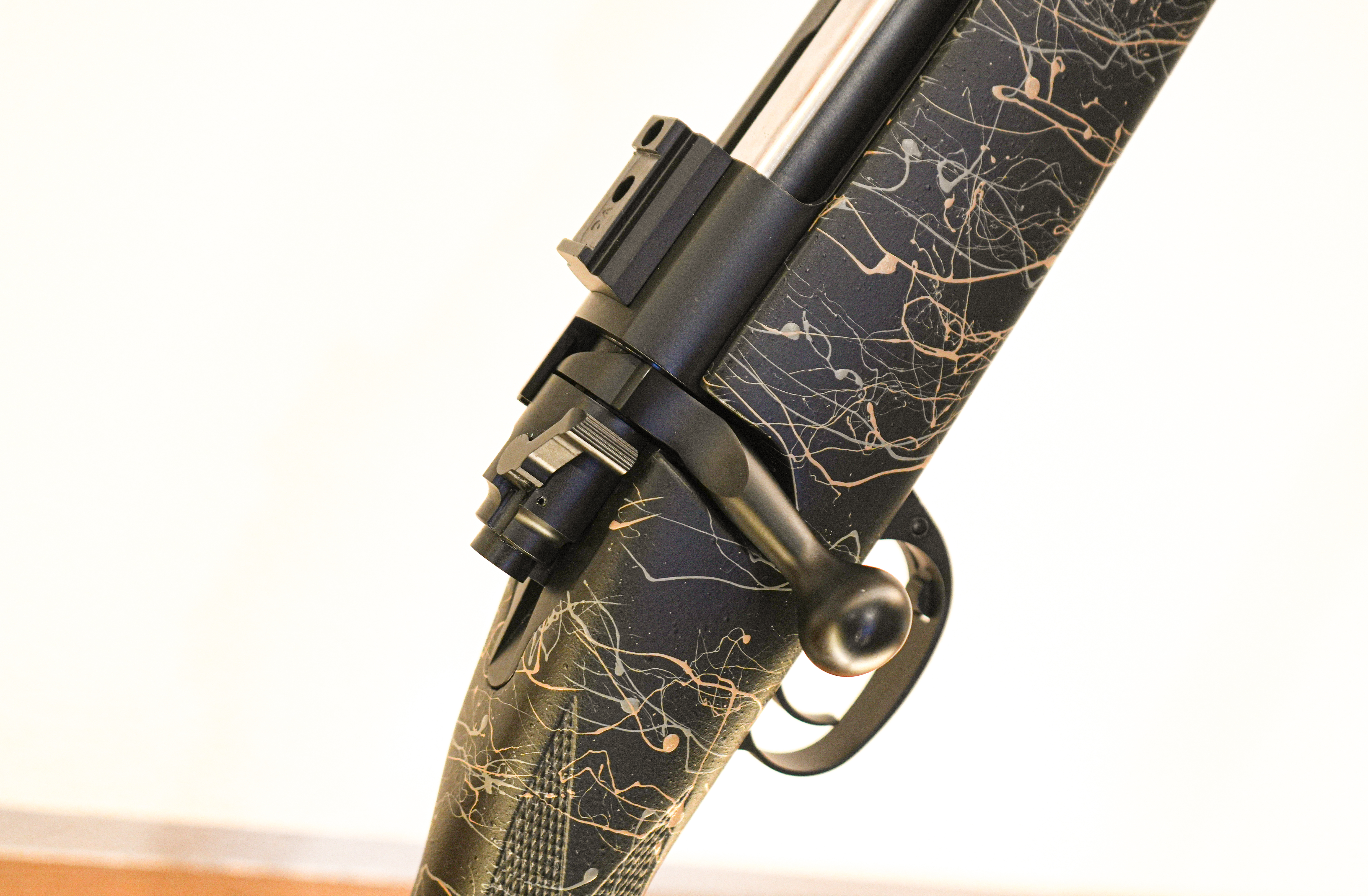 the bolt down so it will not inadvertently open while pushing through brush or as branches brush against it while in a scabbard or pack.
the bolt down so it will not inadvertently open while pushing through brush or as branches brush against it while in a scabbard or pack.
The middle position still keeps the rifle on safety, but allows you to cycle the bolt to clear rounds from the magazine if you don’t want to dump them out of the bottom via the hinged floorplate. A quick move to the forward position puts the rifle into battery, ready to be fired.
Feature #4: Finally we have the trigger
The Safari trigger is what we refer to as a “Skeleton trigger”. The trigger shoe and sear are one piece and there is a single large spring that controls pull weight. These parts are not in any kind of trigger housing. They are exposed like the bones of a skeleton. Why is this a good thing? I don’t care if your rifle falls out of a canoe into a river and comes up muddy and wet, or is covered in dust in the back of a Land Rover after days of driving the African plains. The trigger is protected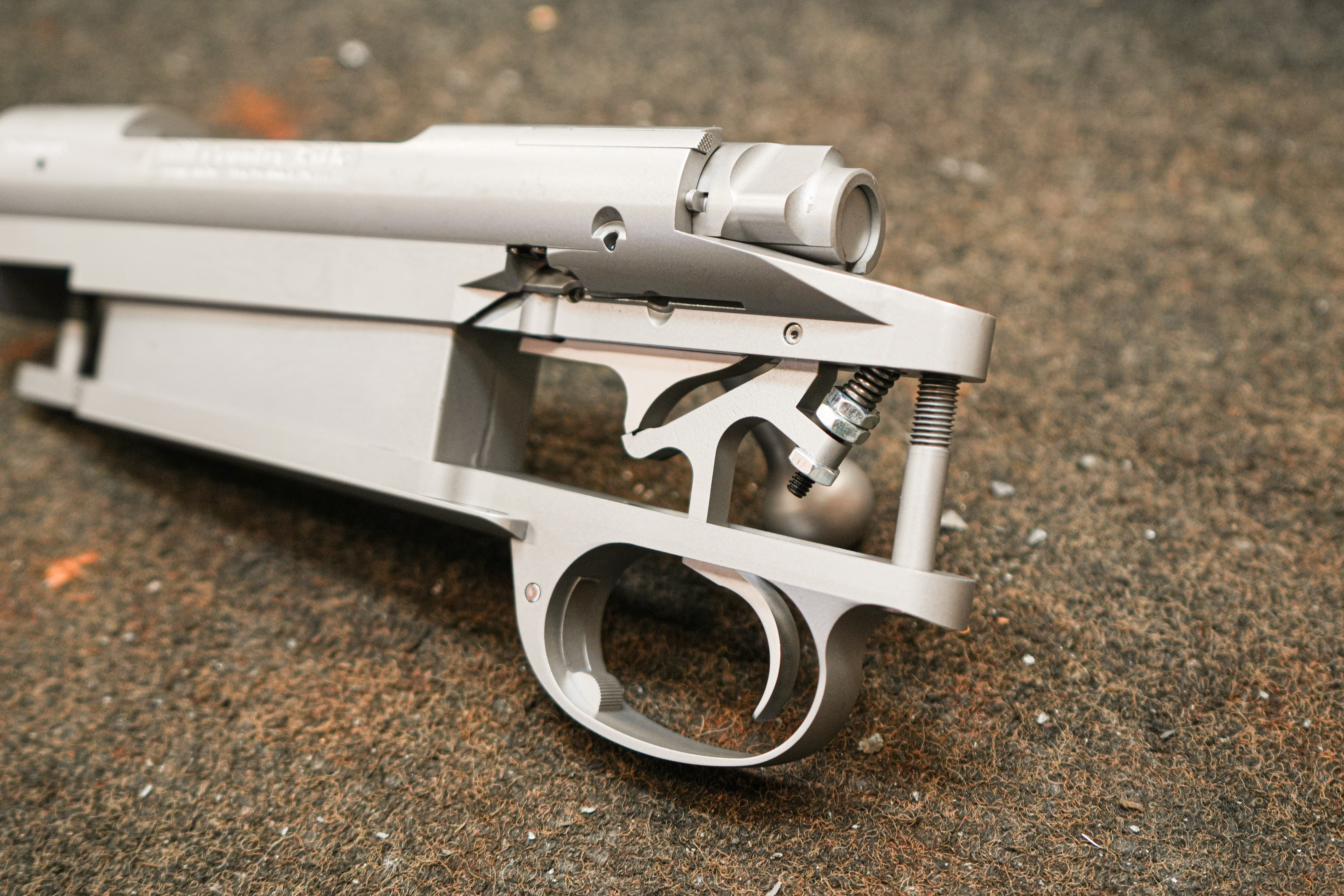 because there is no housing to get clogged up with debris. The reason you don’t see this trigger used in more rifles is largely because they don’t safely adjust to much below a 3 pound pull and it will only work with a 3-position safety. 2.75 pounds is about as light as they safely go. But, you don’t want a light trigger on a Buffalo or Bear rifle anyway. In the heat of the moment a 3 pound trigger feels very light.
because there is no housing to get clogged up with debris. The reason you don’t see this trigger used in more rifles is largely because they don’t safely adjust to much below a 3 pound pull and it will only work with a 3-position safety. 2.75 pounds is about as light as they safely go. But, you don’t want a light trigger on a Buffalo or Bear rifle anyway. In the heat of the moment a 3 pound trigger feels very light.
I know what you’re thinking. But, Matt, if the Safari action is so great, why would I want a Defiance action on my other rifles?
The answer is as follows:
- The Safari action is heavy. Most rifles will weigh 8.5 to 9 pounds without a scope.
- The Control Round Feed bolt is not quite as slick and smooth as the push feed bolt.
- The stocks designed for the Safari action are traditional, straight combed, hunting stocks that don’t work well with larger, high magnification scopes, especially when mounted on a picatinny rail.
- As mentioned above, you can’t get the lighter trigger pull weights that are important for precision,
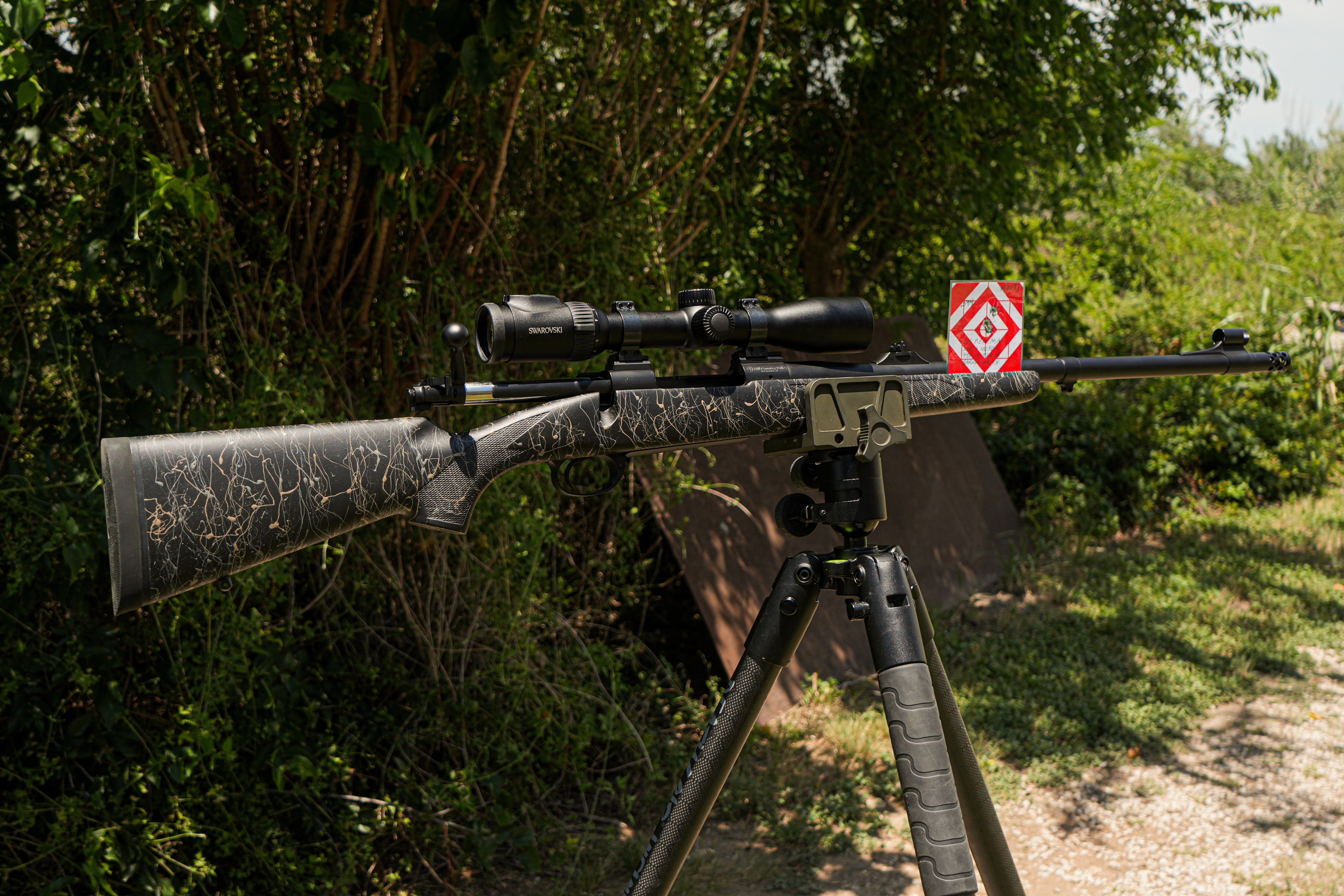 long range shooting.
long range shooting.
For the type of hunting we are talking about in this post, there is nothing better than our Safari Rifle.
Check out the list of available calibers on our website.
